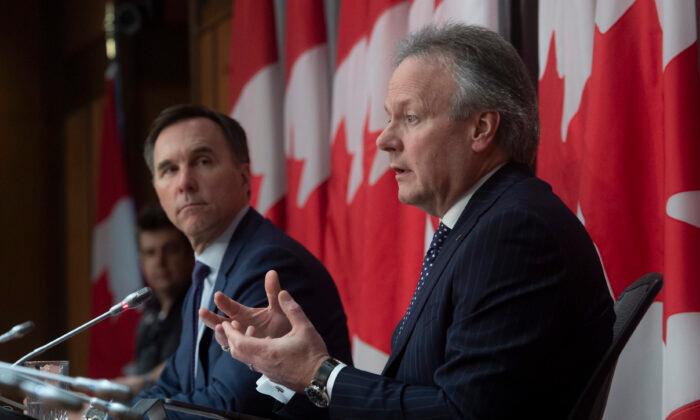But after digesting the human cost of the CCP (Chinese Communist Party) virus—commonly known as novel coronavirus—for the economy, what’s left on the other side is not going to be pretty given the soaring deficit, partial destruction of the tax base, and looming inflation.
Already estimates of a 25 percent drop in second-quarter GDP and 5 percent drop for 2020 are out there, as people are told to stay home and large parts of the economy hunker down.
Policy-makers are more focused on getting money out the door than worrying about how the dust will settle in the long run.
But two experts say that while policy-makers appear to be short-sighted now, a critical consideration to keep in mind is that the economy’s ability to produce needs to be rebuilt so that this wave of government spending doesn’t see prices for consumer goods skyrocket.
“The long-run solution requires increases in the supply side capacity of the economy so that we can stimulate without causing inflation,” added the resident scholar and Addington Chair in Measurement at the Fraser Institute.
A term often mentioned these days is liquidity. This is what the government is trying to provide to businesses and households—such as via loans to businesses and wage subsidies—to ensure parts of the economy can hang in there and aren’t lost for good. Strictly speaking, this is different from stimulus, which is meant to to boost an already functional economy’s longer-term potential growth.
Deficit Spending, Ever-Growing Debt
In dealing with this crisis, the Bank of Canada’s rate cuts and bond buying—tools of monetary policy—are focused on keeping financial markets functioning well. The burden of keeping the economy afloat is primarily being borne by government spending—a tool of fiscal policy.In a joint press conference on March 27, Finance Minister Bill Morneau and Bank of Canada Governor Stephen Poloz wanted to send a clear message that there’s more that they could do.
Morneau said the government is pumping out 5 percent of GDP now. “We have not put a cap on what we might need to invest,” he said.
Poloz said there’s no theoretical limit to how much of the government’s spending the Bank of Canada could finance.
Modern Monetary Theory: No Free Lunch
Poloz’s comments on March 27 that the BoC has an unlimited ability to finance the government’s spending (thus creating more money) may make Modern Monetary Theory (MMT) seem applicable.Proponents of MMT say that deficits don’t matter and that the central bank can seemingly magically keep financing the government without raising taxes.
“It has been tried many times in the past, and the record is not pretty,” he said.
Very rapid creation of money—like when the central bank lends to support big increases in government spending—assuredly leads to inflation. A case in point is the large deficits that the United States ran up in the late 1960s to finance the Vietnam War. The 1970s were then marked by very high inflation.
MMT will have its day in the public policy arena until inflation shows up, says Globerman.
In the aftermath of the 2008 financial crisis, when jurisdictions like the United States and the eurozone engaged in massive central bank purchases of government bonds, inflation only showed up in the prices of stocks, bonds, and real estate—not in consumer goods.
The concern is that this time inflation will show up in the things people buy every day.
Globerman says, with the companies in bad shape, the stock market won’t look as enticing. And neither will the housing market if banks are more risk averse.
“This time, it might be a little different. And we’re more likely to see inflation in a more general sense,” Globerman said. “I think the realistic expectation is, sooner or later, scarcity in the ability of the economy to produce output, is going to lead to inflation.”
Cross thinks the threat from inflation in consumer prices is very real this time. Productive capacity is being destroyed—the supply side is being decimated—but demand is going to eventually grow due to the excess amount of money in the system.
Wake-Up Call
Coming out of the financial crisis, major economies weren’t able to return to a more historically normal level of interest rates. Financial markets would go into a panic if central banks—the U.S. Federal Reserve notably—attempted to raise rates or even reduce the amounts of bonds it buys.The BoC was never able to raise rates to a more normal level either, with one reason being the country’s heavily indebted households.
But as a potential silver lining coming out of this latest economic crisis, Cross says Canadian corporations and households will start paying down debt much as Americans did in the aftermath of the financial crisis.
“This is going to be a real wake up call. A lot of firms and households are going to be going, ‘Oh, my God, I now understand the full risk of debt,’” he said.





